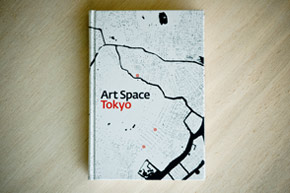Preface
The art spaces of Tokyo inhabit all manner of buildings.
They are hidden down back alleys in private residences; they are in east-side blue-collar neighborhoods in dilapidated former warehouses; they occupy the upper floors of bland office complexes; or they may even spontaneously erupt for a single evening down a tiny backstreet in Shinjuku. People walk by them all the time without realizing they are there. Even determined art lovers, driven by word-of-mouth recommendations and armed with a map, can still find themselves standing right in front of their target and yet totally unable to see it.
With this book, we set out to introduce the reader to twelve of Tokyo’s most distinctive galleries and museums. We are lovers of art, architecture and urban exploration, and having scoured the city for months and visited hundreds of venues, we have chosen what we feel are some of the most inspiring art spaces Tokyo has to offer.
Among them are a warehouse built in 1868 that has survived a major earthquake and firebombing, a beautifully maintained early 20th century Japanese estate-turned-museum, a renovated public bathhouse from the 1950s, a couple of sleek examples of post-modern architecture and an anime-inspired castle in the woods. Some have longer histories than others, but each has a story worth listening to.
This book tries to bring these stories to life.
We believe that art is not just an end goal, but a process involving all manner of people. Aside from the artists themselves, the art world is made up of collectors, curators, architects, businessmen, npo organizations and the patrons — those of us who gain pleasure from simply viewing and interacting with art — all taking part in some way to foster the creation and consumption process.
With that in mind, we set out to bring all of these voices into one place, to allow the thoughts of figures with decades of experience to clash with the voice of someone just entering the field. Why were these spaces established and what are their goals? What are collectors interested in? What role does art play in Japanese society today? Where does the Japanese art world stand in relation to Asia and the rest of the world?
Through bringing all these voices together and introducing readers to spaces both new and old, well-known and not, we hope to provide at the very least a cross-section of the Tokyo art world. This book gives those who are curious the means to find a way in, and those who are already experienced a chance to look at themselves and the world they inhabit with a fresh perspective.
— Ashley Rawlings & Craig Mod, April 2008












